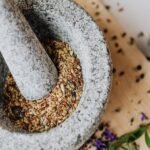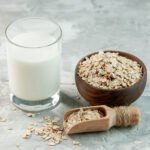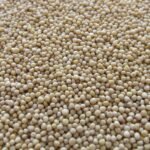The Unsung Hero in Your Chickpea Can
In today’s culinary adventure, we’ll lift the lid off an extraordinary ingredient that has been hiding in plain sight. Yep, we’re talking about aquafaba. Hang on to your seats, folks! We’re about to spill the beans (or should we say, the chickpeas?) on this phenomenal foodstuff.
Where Does Aquafaba Come From?
Aquafaba, as peculiar as it may sound, is nothing more than the viscous water that chickpeas have been soaked, cooked, or canned in. That’s right! The goopy liquid you’ve probably been pouring down the drain without a second thought is a true nutritional diamond in the rough.
Its curious name, coined by American software engineer Goose Wohlt in 2015, comes from the Latin words for water (aqua) and bean (faba). And believe it or not, this beany brew has some serious culinary and nutritional chops.
Forms and Uses of Aquafaba
Though we typically think of it as a liquid, aquafaba can actually come in several forms:
- Raw: Directly from the can or after boiling dry chickpeas.
- Reduced: After simmering raw aquafaba until it thickens.
- Whipped: Beat until it forms stiff peaks, much like egg whites.
- Dried: Dehydrated and ground into a powder.

Aquafaba has a wide array of applications, particularly in vegan cuisine. It can mimic eggs in baking, whipping up into meringues, and emulsify into creamy mayonnaise. Heck, it can even be used in cocktails as a substitute for egg whites! Talk about versatility.
Nutritional Benefits and Values of Aquafaba
While aquafaba isn’t exactly a nutritional powerhouse like some other foods, it does offer a few benefits. It’s low in calories, fat, and cholesterol, and is a fantastic option for those with egg allergies or dietary restrictions. It also contains some of the soluble fibers and proteins from chickpeas, which can aid in digestion and contribute to feelings of fullness.
| Nutrient | Value per 100g |
|---|---|
| Calories | 3-5 kcal |
| Fat | < 0.1 g |
| Protein | < 0.1 g |
| Carbohydrates | 1 g |
| Fiber | < 0.1 g |
| Sodium | 2-5 mg |
Frequently Asked Questions
1. Can aquafaba be used with all types of beans?
While aquafaba technically refers to chickpea water, other legumes like white beans and cannellini beans can produce a similar effect. However, they may impart a stronger flavor to your dishes.
2. How long can I store aquafaba?
Stored in a sealed container, raw aquafaba can last about a week in the fridge. You can also freeze it for up to six months. Just remember, it expands when frozen, so give it some room to grow!
3. Can I make aquafaba from dry chickpeas?
Indeed! Just soak your chickpeas overnight, then simmer them on the stovetop until they’re soft. The leftover cooking liquid is your homemade aquafaba.
The Final Scoop on Aquafaba
So, there you have it, folks. Aquafaba might just be the unsung hero of your kitchen pantry. With its wide range of uses and minimal nutritional downside, it’s a real boon for those seeking a plant-based lifestyle, or simply looking for innovative ways to cut food waste and experiment in the kitchen.
Next time you crack open a can of chickpeas, think twice before you let that liquid gold go down the drain. You never know what culinary masterpiece could be just a whip or whisk away!
Fun Facts
- Despite its recent fame, aquafaba has been used for centuries in traditional Middle Eastern and Mediterranean cuisine.
- It takes about 3 tablespoons of aquafaba to replace one egg in baking recipes.
- Even with its rising popularity, the exact science behind aquafaba’s unique properties isn’t entirely understood. It’s a delicious mystery!
Source: Sciencedirect.com




